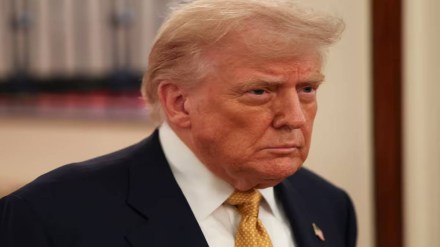By Jamal Mecklai CEO, Mecklai Financial
Since Donald Trump’s inauguration on January 20, the DXY has fallen like a stone, mimicking in a sense America’s credibility. It is today down over 10%, despite having given up some part (over 1%) of its gains in the past month. Perhaps more curiously, there is the volatility of the DXY, which had risen by 2.84% from 6.02% to 8.86% over that same period, and has fallen from its high of 9.33% a little over a month ago by 0.46%—a drop of about 16%.
Now, as readers of this column may have noticed, I spend a fair amount of time thinking about patterns, which I believe actually determine everything about markets and, in fact, life. The trick, of course, is to be able to decipher them and acknowledge that these are shifting sands—in other words, there is no certainty. In general, when volatility breaks out it tends to rise in nearly a straight line for four to six months, and after it tops out it falls quite rapidly. While I am loathe to assert a definitive turning point, might we have, indeed, passed that and will DXY volatility come down and, as a result, abort the recent dollar decline?
Implications for the US Dollar and Indian Rupee
While I have been sanguine about the need for an even greater dollar decline, primarily because the US is very expensive, particularly compared to Europe, markets do not listen solely to me. Or, even if they do, they certainly take their own sweet time about it; I note, incidentally, that EUR has risen by more than 30% than the DXY has over this period. Again, there are strong arguments that the depth and liquidity of US asset markets generate their own “demand” for dollars, which would quite readily overwhelm the competitiveness argument I had been holding on to. Thus, even if it is possible that the dollar could continue to decline over time, it is beginning to appear likely that in the immediate term the decline may be over.
This would suggest that DXY volatility will stop rising and may, indeed, fall further. In other words, perhaps Trump’s intrinsic volatility has now—for some time, at least—been built into the market and, as I titled the piece, he has become part of the furniture.
US equity market volatility, too, has surged from around 20% in January to 29% right after Trump announced his Liberation Day tariffs on April 2. And while the volatility of the Dow has not come down materially since then, it is conceivable that if, as I said, Trump begins to be seen as part of the background, we could see some further declines there as well.
Of course, and particularly having run into increasing domestic turbulence and with his various “peace” initiatives fumbling more or less continuously, he is ramping up the tariff story again. But markets may be more than convinced by the TACO (Trump always chickens out) trade, and so, it is possible that even if he lambastes the world economy with more trade shenanigans, we may not see a surge in volatility again. Of course, tomorrow is another day and Trump’s personal insecurity ensures that there will certainly be some policies that will seem incomprehensible to markets. But, as I have said, current volatility patterns are signalling some possible calm in the near future.
We see this pattern repeated in the domestic market as well, where USDINR volatility has risen from 1.63% at Trump’s inauguration to a huge 6.27% today, after a peak of 6.5% in mid-June. Spot rupee, of course, remains broadly where it was between 85.80 and 86 to the dollar, although it has provided both heart attacks and opportunities to importers, exporters, and others, hitting both 88 and better than 84 in the interim. This volatility is also showing signs of slowing down, which could suggest a steady to slightly stronger rupee that would be reinforced by a rate cut in August in reflection of improved inflation.
Of course, the Reserve Bank of India, disguised as the Big Bad Wolf, is constantly roaming our market so it’s dangerous for any of the three little pigs to stay unhedged.
